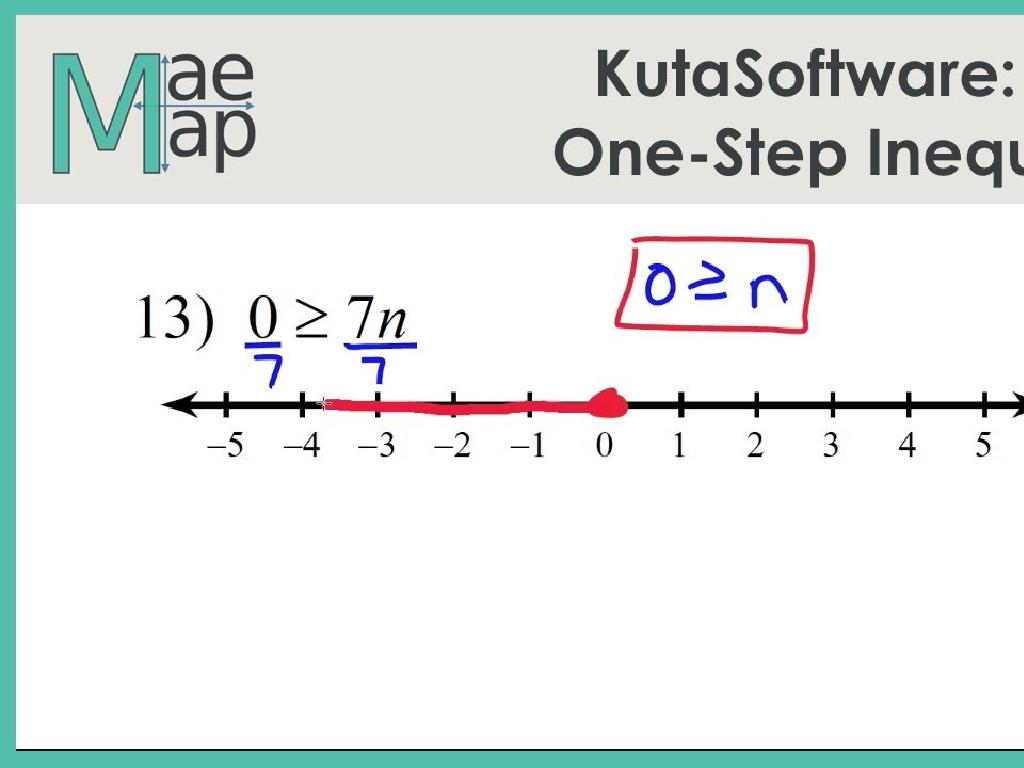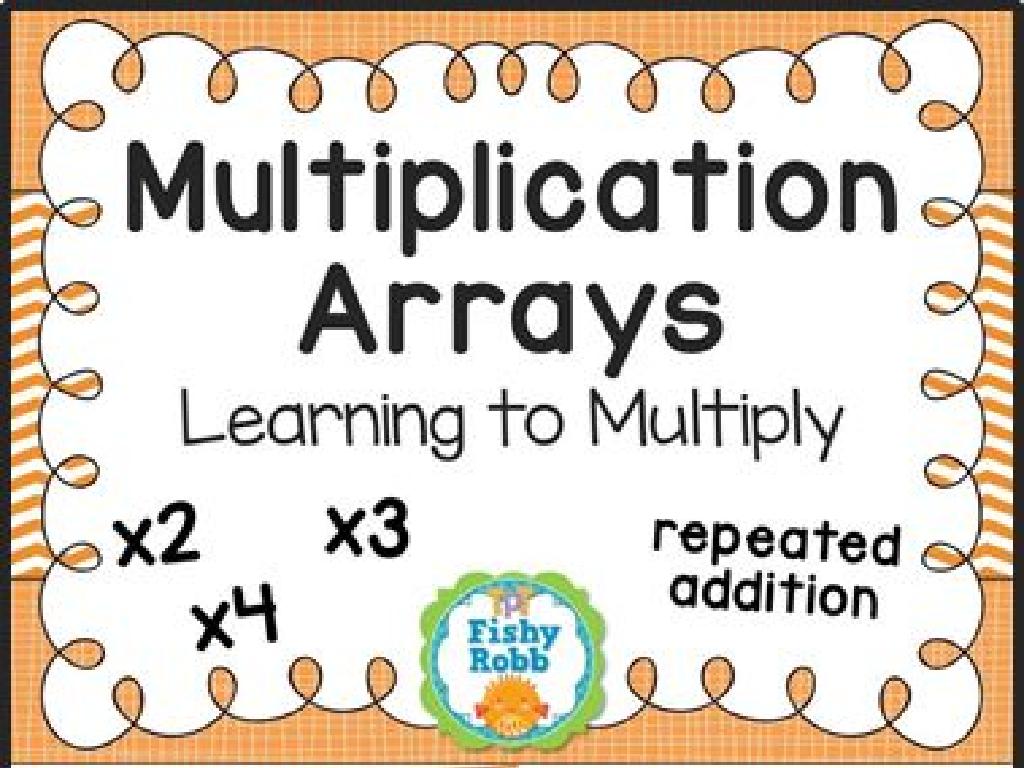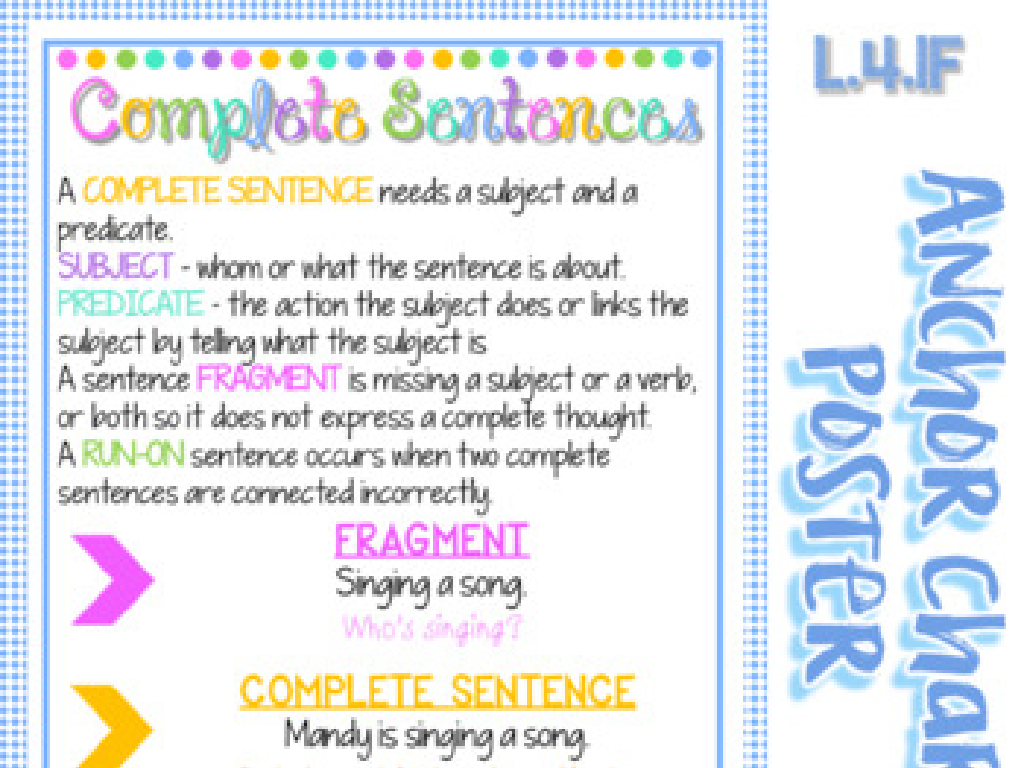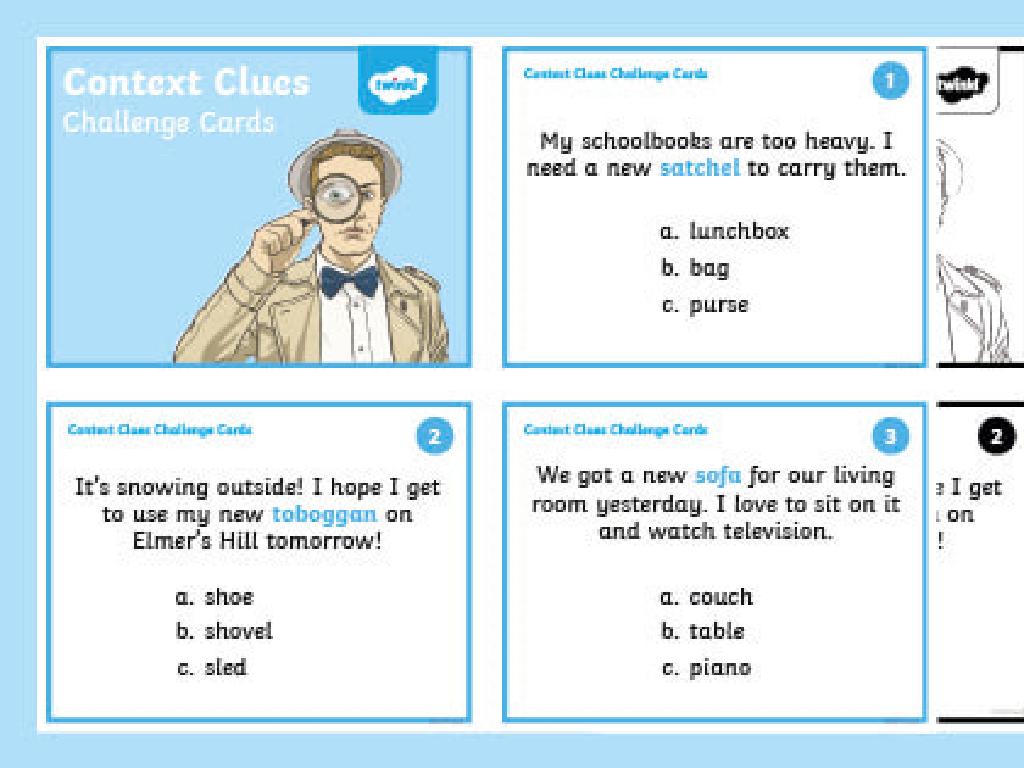What Is Economics?
Subject: Social studies
Grade: Fourth grade
Topic: Basic Economic Principles
Please LOG IN to download the presentation. Access is available to registered users only.
View More Content
Welcome to Economics!
– Economics: study of choices
– Economics helps us understand how people, businesses, and governments choose to use resources.
– Making choices every day
– Think about deciding between a toy or a book that’s making an economic choice!
– Importance of economics
– Learning economics helps us make better decisions and understand the world.
– Economics in daily life
– Examples: Saving pocket money or choosing what to buy in a store.
|
This slide introduces the concept of economics to fourth-grade students by explaining it as the study of choices. It’s important to relate the idea of making choices to their everyday lives, such as choosing between different items when they shop or deciding how to spend their allowance. Emphasize that studying economics is not just about money; it’s about making decisions that can affect their lives and the lives of others. Use relatable examples to illustrate the presence of economics in daily life, such as saving money for a school trip or a family deciding what to have for dinner based on their budget.
Needs vs. Wants: Understanding Economics
– Identifying our basic needs
– Needs are essentials like food, water, and shelter.
– Understanding our wants
– Wants are extras like toys, games, and candy.
– Can wants become needs?
– Sometimes, what we want can feel very important.
– Discussing needs and wants
|
This slide introduces the concept of needs and wants, which is a fundamental economic principle. Begin by explaining that needs are things we must have to survive, such as food, water, shelter, and clothing. Wants, on the other hand, are things we would like to have but are not essential for survival, like toys or the latest electronics. Engage the class in a discussion about how sometimes the lines between wants and needs can blur, for example, a cell phone might be a want for entertainment, but it can become a need for communication in emergencies. Encourage students to think critically about their own needs and wants and to share examples from their lives. This will help them understand the value of money and resources, setting the stage for more complex economic concepts.
Understanding Goods and Services
– What are goods?
Goods are items like toys, food, and books that we can buy.
– What are services?
Services are jobs like teaching, haircuts, and mail delivery done for us.
– Community examples
Examples: Grocery store (goods) and library (services) in our town.
– Importance in economy
|
This slide introduces the basic economic concepts of goods and services to fourth-grade students. Goods are tangible items that satisfy our wants and needs, such as food, clothing, and toys. Services are actions or activities performed by others, like a doctor’s checkup or a teacher’s lesson. Use relatable examples from the community to help students identify and differentiate between goods and services they encounter in their daily lives. Emphasize the role both goods and services play in the functioning of the economy and how they meet the needs and wants of people in the community.
Producers and Consumers
– Producers: Makers of goods
– People or companies that create products or offer services
– Consumers: Buyers and users
– Individuals or groups that purchase and utilize products or services
– Understanding roles through play
– Role-play to learn about economic interactions
– The market interaction
|
This slide introduces the concept of producers and consumers to the students. Producers are defined as individuals or companies that make goods or provide services, while consumers are those who purchase and use these goods and services. To help students understand these roles, a role-play activity is suggested where students pair up and act out scenarios as either a producer or a consumer. This interactive approach will help them grasp the relationship between producers and consumers in the economy. The teacher should prepare a few examples of interactions between producers and consumers to guide the role-play and discuss the outcomes with the class afterward.
Understanding Supply and Demand
– What is supply?
– Supply is how much of something you have.
– What is demand?
– Demand is how much people want that thing.
– Price changes with supply & demand
– If supply is low and demand is high, prices go up!
– Let’s play: Lemonade Stand Game
|
This slide introduces the basic economic concepts of supply and demand to fourth-grade students. Supply refers to the amount of a product or service that is available for purchase, while demand indicates the desire of buyers for that product or service. Students should understand that prices can fluctuate based on the relationship between supply and demand; typically, if something is in short supply but high demand, the price will increase. To illustrate these concepts, the class will engage in an interactive activity called ‘The Lemonade Stand Game’ where students simulate running a lemonade stand to experience how supply and demand affect prices. Teachers should prepare by setting up the game with different scenarios that affect supply (like weather) and demand (like community events).
Scarcity and Making Choices
– Understanding scarcity
– Scarcity means we can’t have everything we want.
– The need to make choices
– We must choose how to spend our money wisely.
– Group discussion activity
– Discuss what school supplies are most important.
– Decision-making with a budget
|
This slide introduces the concept of scarcity and the necessity of making choices due to limited resources. Scarcity is a fundamental economic principle that occurs because resources are finite while human wants are infinite. As a result, we must make decisions on how to allocate our limited money or resources. The group discussion activity will involve students deciding between different school supplies within a set budget, which will help them understand the concept of prioritizing based on needs and wants. Teachers should facilitate the discussion by providing a hypothetical budget and a list of supplies with prices. Encourage students to explain their choices and consider the value of each item.
Understanding Opportunity Cost
– What is opportunity cost?
– It’s the value of what you give up when you choose something.
– Choices mean giving up others
– When we pick one thing, we have to let go of another.
– Example: Toys vs. Books
– If you buy a toy with your allowance, you can’t get a book.
– Making smart spending decisions
|
Opportunity cost is a fundamental concept in economics that explains the trade-offs we make in our decisions. When we choose one thing, we naturally give up the opportunity to have something else. For example, if a student spends their allowance on a toy, they can’t use that same money to buy a book. This concept helps students understand the importance of making thoughtful choices, especially when resources like money are limited. Encourage students to think about opportunity cost in their daily lives and discuss the importance of prioritizing their wants and needs when making decisions.
Exploring Economic Systems
– Types of economic systems
– Market, Command, Traditional, Mixed
– Decision making in economies
– What, how, and for whom to produce?
– Examples of each system
– Market: Lemonade stand, Command: School cafeteria, Traditional: Family farm
|
This slide introduces students to the concept of economic systems, which are the ways that societies organize the production, distribution, and consumption of goods and services. There are four main types: Market (based on supply and demand, like a lemonade stand), Command (government makes all decisions, similar to how a school cafeteria decides the menu), Traditional (customs guide the economy, like a family farm), and Mixed (a combination of different types). Discuss how each system decides what to produce, how to produce it, and for whom it is produced. Use simple, relatable examples to help students understand these concepts. Encourage students to think of other examples they may have encountered in their lives.
Class Activity: Economic Decisions Board Game
– Navigate the game board
– Make economic choices
– Reflect on choice outcomes
– Think about what you gained and lost with each decision
– Understand opportunity costs
– Opportunity cost is what you give up when you choose one option over another
|
This interactive board game activity is designed to help students understand the concept of economic choices and opportunity costs. Set up the classroom with stations representing different economic scenarios where students will make choices as they move along the game board. Each decision should come with a consequence, allowing students to see the trade-offs and potential benefits of their choices. After the game, facilitate a discussion where students can reflect on their experiences and relate them to real-life economic decisions. Possible variations of the activity could include scenarios like spending vs. saving money, buying one item over another, or choosing between leisure time and extra work. The goal is to make students aware that every choice has an opportunity cost and to help them think critically about their personal economic decisions.
Wrapping Up: What is Economics?
– Recap of economics basics
– Importance of economics
– Understanding economics helps us make better choices
– Reflect on today’s learning
– Think of one new fact you learned today
– Write down your thoughts
– Share one thing you learned and one question you have
|
As we conclude today’s lesson, it’s important to review the key concepts of economics that were covered. Emphasize to students how economics affects everyday decisions and why it’s a valuable subject to understand. Encourage students to reflect on what they’ve learned by writing down a new fact about economics. Additionally, ask them to think of a question they still have, which will help gauge their understanding and curiosity. This exercise not only reinforces the day’s learning but also promotes critical thinking and active participation. During the next class, we can address these questions, fostering a continuous learning environment.






